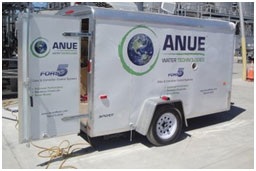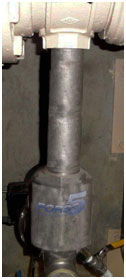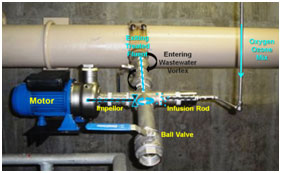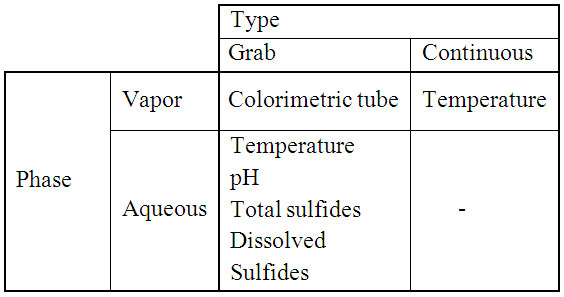Second of Four Parts
All sewage collection systems are subjected to odor and corrosion. Sewage odor is a localized and political issue. However, corrosion is the issue with the greatest potential for environmental harm and real systemic and economic damage.
Part 1 of this series (Pumps & Systems, June 2012) discussed how ozone and oxygen can be used to prevent odor and corrosion in wastewater collection systems. Part 2 discusses in further detail how the process works and how the process was tested.
A water treatment company in San Diego, Calif., designed and manufactured a treatment system that uses oxygen and ozone to effectively induce clean, sustainable and cost effective treatment of odor and corrosion in collection systems.
The direct treatment of the wastewater is achieved through a process of treating a fractional flow of wastewater, with ozone and oxygen, and returning this treated flow into the untreated flow, inducing change. This process is termed hydrodynamic infusion. Before being launched, the system underwent rigorous testing.
Testing Location
The testing was conducted at a municipal wastewater district in southern Arizona that had received numerous complaints from an upscale neighborhood regarding the presence of strong sewage odor.
The odor was determined to be originating from the collection system by way of manholes located in the neighborhood. Traditionally, sodium hypochlorite (bleach) had been used for odor control, essentially system wide. This treatment, however, had not proven effective in controlling the odor generated within the collection system. This was evident by the complaints that were made, as well as through the collection of H2S vapor concentration data.
Testing Process
The self-contained treatment system is housed in a trailer, and this was used in the test. It is referred to as a mobile diagnostic unit (MDU) and shown in Image 1. The MDU was placed at the treatment site and attached to a 2-inch tapping saddle on the force main (see Image 2) on August 18, 2011.
The goal was the elimination of odor at the problematic downstream manholes, as well as total and dissolved sulfides, and to increase the dissolved oxygen (DO) to levels above aerobic, or 1 milligram per liter.
The use of the bleach for odor control was ceased on August 16 at approximately 9:30 a.m., giving the system approximately 48 hours to resume untreated conditions.
Three downstream manholes were used to collect samples and were referred to as MH1, MH2 and MH3, with MH1 being the closest to the point of treatment. MH1 was approximately 2 miles downstream from the treatment site and MH2 and 3 were an additional ¼ to ½ mile from MH1.
 |
| Image 1. The mobile diagnostic unit |
 |  |
| Image 2. Tapped force main with attached infuser |
Prior to treatment, the company began collecting grab samples at MH1 and placed a gas detection sensor on August 17, 2011, at approximately 10:30 a.m. Grab samples were analyzed for pH, temperature, DO, H2S and total and dissolved sulfides. Additionally, a third party sampling service was hired to collect liquid grab samples and gas detector data from MH1 and only gas detector data from MH2 and MH3, beginning Aug. 18 at approximately 9:30 a.m. The third party grab samples were analyzed for pH, temperature, oxygen reduction potential (ORP), DO and sulfides.
 |
| Table 1. Sample phase and type matrix |
Treatment at the force main was initiated midday on August 18 and initially consisted of liquid phase infusion of 40 liters per minute of O2 on a continuous, 24-hour basis and infusion of 120 grams per hour of O3 whenever the force main pumps cycled on. On Friday, Aug. 19, the O2 injection amounts were decreased to 20 liters per minute and the O3 to 60 grams per hour.
The force main’s diameter was 8 inches and had a flow of 15,000 gallons per day, resulting in a significantly long retention time of 25 hours between the treatment site and MH1.
To effectively rate the successful treatment of the force main, a background against which to make a comparison is required. In this instance, the municipality used the same third party testing service used to quantify H2S emissions from MH1 and MH3.
The baseline data, provided from June 30 to July 8 and July 12 to 22 at MH 1 and July 15 to 21 at MH3, does not occur immediately before the MDU test but is recent enough to provide a good representation of the potential H2S levels present in these manholes.
These results will be discussed in Part 3 of this series in the September 2012 issue.

